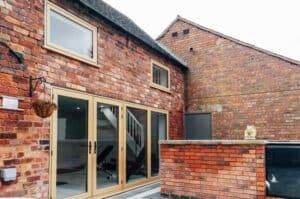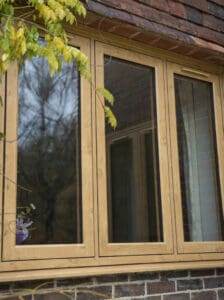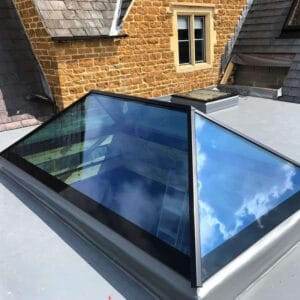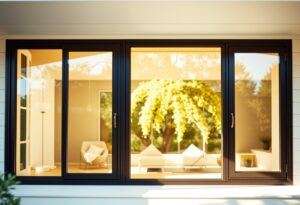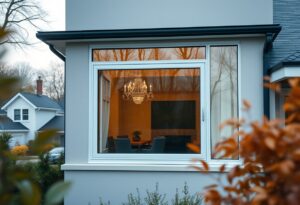You may be wondering whether investing in high performance windows is worth your time and money. These windows can significantly enhance your home’s energy efficiency, leading to reduced utility bills and increased comfort. However, the initial installation cost can be considerable. By conducting a cost-benefit analysis, you can evaluate the long-term savings against the upfront expenses. For a more in-depth understanding, check out this article on Are Magic Windows Worth the Money? A Cost-Benefit Analysis for further insights.
Understanding High Performance Windows
Before commenceing on a decision regarding window installations, it’s imperative to grasp the fundamentals of high performance windows. These innovative products significantly enhance your home’s energy efficiency through advanced construction, materials, and technology.
Definition and Key Features
Above all, high performance windows are crafted with precision to maximise energy efficiency and comfort. They typically consist of multiple panes, such as double or triple glazing, filled with argon or krypton gas for insulation, and feature low-emissivity (Low-E) coatings to reflect heat. Their energy ratings—like U-factor and solar heat gain coefficient—are vital in assessing their effectiveness (selecting the right window can greatly impact your energy bills).
- Multiple Glazing – red
ucing heat loss.
- Low-E Coatings – enhancing energy efficiency.
- Argon or Krypton Gas – improving insulation.
- Energy Ratings – assessing performance.
- Durable Frames – ensuring longevity.
Assume that selecting high performance windows will ultimately reduce your energy consumption and improve comfort in your living space.
Types of High Performance Windows
After understanding their definition, you should explore the various types of high performance windows available. These include double-glazed, triple-glazed, and options with low-emissivity (Low-E) coatings, each offering distinct advantages for enhanced energy efficiency and comfort (choosing the right type can be critical to achieving optimal performance).
- Double-Glazed – standard energy-efficient option.
- Triple-Glazed – superior insulation for colder climates.
- Low-E Coated – reflects heat while allowing light.
- Tempered Glass – safety and durability.
- Soundproof Glass – reduces noise pollution.
After you’ve considered the various types, it’s important to understand that each option offers unique benefits tailored to different needs and environments.
| Type | Benefits |
|---|---|
| Double-Glazed | Cost-effective solution with decent insulation. |
| Triple-Glazed | Highly energy-efficient, ideal for extreme climates. |
| Low-E Coated | Reflects heat and blocks UV rays, protecting interiors. |
| Tempered Glass | Enhanced safety; less likely to shatter. |
| Soundproof Glass | Reduces outside noise, creating a peaceful environment. |
High performance windows not only improve energy efficiency but also enhance the comfort and aesthetic appeal of your home. Making a well-informed choice in this area is vital for long-term satisfaction (proper installation and selection can lead to significant energy savings).
- Insulation – maximises heat retention.
- UV Protection – safeguards your interiors.
- Condensation Reduction – prevents moisture-related damage.
- Environmentally Friendly – promotes sustainability.
- Aesthetics – enhances curb appeal.
| Feature | Positive Impact |
|---|---|
| Energy Efficiency | Reduces energy costs over time. |
| Enhanced Comfort | Maintains consistent indoor temperatures. |
| Noise Reduction | Improves indoor tranquility. |
| Natural Light | Brightens spaces without excess heat. |
| Long-term Investment | Increases property value. |
After making an informed decision about high performance windows, you’ll notice substantial improvements in both energy efficiency and comfort within your home.

The Initial Costs of Installation
Clearly, the installation of high performance windows involves various initial costs that can influence your decision-making process. These costs typically encompass materials, labour for professional installation, and any modifications needed, such as additional framing or insulation. Depending on the complexity of the project, your overall expense may vary significantly. (It’s important to acquire multiple quotes from contractors to ensure you make an informed choice.)
Breakdown of Installation Costs
At the forefront of your investment are the components that make up the installation costs of high performance windows. Here’s a breakdown of typical expenses:
Installation Cost Breakdown
| Item | Estimated Cost |
| Materials | £200 – £1,000 per window |
| Labour | £150 – £300 per window |
| Modifications | £50 – £500 (variable) |
Comparison with Standard Windows
Between high performance windows and standard options, you will notice a significant price disparity. The initial cost of high performance windows may be £100 – £500 more per unit compared to standard windows. However, this premium can be offset by the long-term savings on energy bills. (Evaluating your energy usage may help you decide if the investment aligns with your financial goals.)
Cost Comparison
| Window Type | Estimated Cost |
| High Performance Windows | £500 – £1,300 per window |
| Standard Windows | £300 – £800 per window |
With the choice of high performance windows, you are investing in energy efficiency that can lead to substantial long-term savings. The higher upfront cost can often be justified through reduced utility bills and increased property value. (Ultimately, the decision lies in your budget and how much you prioritise energy efficiency in your living space.)
Long-Term Financial Benefits
Now let’s explore the long-term financial advantages of installing high performance windows. While the initial investment may seem significant, the reduction in your heating and cooling costs will translate into substantial savings over time. You’ll find that as energy efficiency improves, your utility bills will decrease, enhancing your budget flexibility and providing a worthwhile return on your investment.
Energy Savings Over Time
After installing high performance windows, you can expect a dramatic reduction in energy costs. With their ability to effectively minimise heat loss in winter and keep your home cool in summer, your heating and cooling expenses will significantly decline. Over the years, these savings can accumulate, potentially covering the installation cost and yielding profits well into the future.
Impact on Property Value
Between the energy savings and improved aesthetics, the installation of high performance windows can considerably raise your home’s resale value. Prospective buyers are often willing to pay a premium for homes with energy-efficient features, making your property more appealing. Thus, this upgrade serves not just to enhance comfort, but to boost your investment returns as well. (Think carefully about how this could benefit your financial future.)
To maximise the potential increase in property value, consider the long-term benefits of high performance windows beyond just energy savings. As energy efficiency becomes a priority for homeowners, having these windows installed can give your property a distinct edge in the market. Consequently, your home’s appeal to buyers will rise, leading to higher offers when you decide to sell. (Choosing energy-efficient upgrades is a smart manoeuvre for any homeowner.)
Environmental and Health Considerations
Despite the initial costs, installing high performance windows can significantly enhance both environmental and health aspects of your home. These windows not only provide better insulation, reducing your reliance on heating and cooling systems, but they also help to minimise cold drafts and condensation, which can lead to mould growth. By making this investment, you contribute to a healthier living space and help protect our planet.
Reduction of Carbon Footprint
Considerations around energy conservation are paramount when assessing high performance windows. By improving your home’s insulation, these windows reduce the amount of energy required for heating and cooling, leading to lower greenhouse gas emissions and a smaller carbon footprint. This environmentally-friendly choice aids in the fight against climate change, making your home not just comfortable but also sustainability-focused. (Assessing your energy needs is an important part of this decision.)
Improved Indoor Air Quality
Below the surface benefits of energy savings, high performance windows offer notable health advantages as well. They actively enhance your home’s thermal comfort and reduce drafts, thus minimising cold spots that can impede your indoor air quality. Improved air circulation promotes a healthier environment, contributing positively to your overall well-being. (You should weigh the health benefits when considering this upgrade.)
In addition to fostering thermal comfort, the use of high performance windows can significantly reduce the risk of indoor allergens and pollutants. By keeping drafts and moisture at bay, these windows help create a more stable indoor environment, reducing the likelihood of mould, dust mites, and other allergens proliferating in your home. It’s important to recognise that investing in such windows not only benefits the environment but also provides a healthier living space for you and your family. (You should consult with professionals to determine the best options for your needs.)
Government Incentives and Rebates
To encourage energy efficiency, various government incentives and rebates exist for homeowners opting to install high performance windows. These can significantly reduce your out-of-pocket expenses through federal, state, and local programmes that offer financial aid, such as tax credits and rebates, to offset costs. (It’s wise to explore these options before finalising your installation decision.)
Overview of Available Programs
Against the backdrop of rising energy costs, you may find numerous programmes available that ease the burden of installing high performance windows. Many federal and state initiatives offer tax credits or rebates for energy-efficient home improvements. Additionally, you may uncover local utility company incentives aiming to promote sustainability. (Investigating these programmes could lead to substantial savings for your project.)
Requirements and Eligibility
Rebates typically come with specific eligibility criteria that you must meet to benefit from these financial incentives. You may need to ensure the windows comply with certain energy efficiency standards and may also have to use specific brands or products listed under the programme guidelines. Assistance is often provided through detailed application processes. (Being well-informed about eligibility will help streamline your rebate application.)
More on Requirements and Eligibility
Available rebates often require documentation, such as receipts and energy performance ratings, to verify compliance with programme stipulations. You may also need to submit your application within certain timeframes to qualify for the financial aid offered. This thorough process is designed to ensure that only eligible projects receive support, enabling efficient use of public funds. (Understanding the documentation required can save you time and potential headaches later.)
To wrap up
Summing up, the cost-benefit analysis of installing high performance windows can significantly impact your home’s energy efficiency and overall comfort. By weighing the initial investment against long-term savings on energy bills and potential increases in property value, you can make a well-informed decision. Additionally, government incentives and rebates may further offset costs, enhancing the financial viability of this upgrade. Ultimately, the decision should align with your sustainability goals and desires for improved living conditions.
FAQ
Q: What are high performance windows?
A: High performance windows are specially designed to offer improved insulation and energy efficiency compared to standard windows. They typically include features such as multiple glazing, low-emissivity (low-E) coatings, and gas fills between panes to reduce heat transfer and enhance thermal performance.
Q: How much can I expect to save on energy bills with high performance windows?
A: The savings on energy bills can vary significantly depending on the specific window type, local climate, and home orientation. On average, homeowners can expect a reduction in heating and cooling costs of approximately 10-25% after installing high performance windows, leading to substantial savings over time.
Q: What is the typical cost of installing high performance windows?
A: The cost of high performance windows can range from £300 to £1,000 per window, depending on factors such as size, style, brand, and installation fees. While the upfront expense is higher than traditional windows, the long-term energy savings often justify the investment.
Q: How do high performance windows affect home comfort?
A: High performance windows enhance home comfort by maintaining a more consistent indoor temperature and reducing drafts. They also minimise condensation, which can improve overall indoor air quality and prevent issues related to dampness.
Q: Is there a return on investment (ROI) for installing high performance windows?
A: Yes, many studies have shown that the ROI for high performance windows can be significant. Homeowners can recoup 60-70% of their investment upon selling the property, and combined with reduced energy costs, the financial benefits can be realised within a few years.
Q: Are there any financial incentives available for installing high performance windows?
A: Various government schemes and local programmes may offer financial incentives for energy-efficient home improvements, including high performance windows. Homeowners should inquire about potential rebates, tax credits, or low-interest loans available in their area to help offset installation costs.
Q: How do I choose the right high performance windows for my home?
A: Selecting the right high performance windows involves considering factors such as energy efficiency ratings (like U-value and solar heat gain coefficient), window frame materials, and aesthetic preferences. Consulting with a professional installer can also provide valuable insights and recommendations tailored to your specific needs and local climate conditions.

